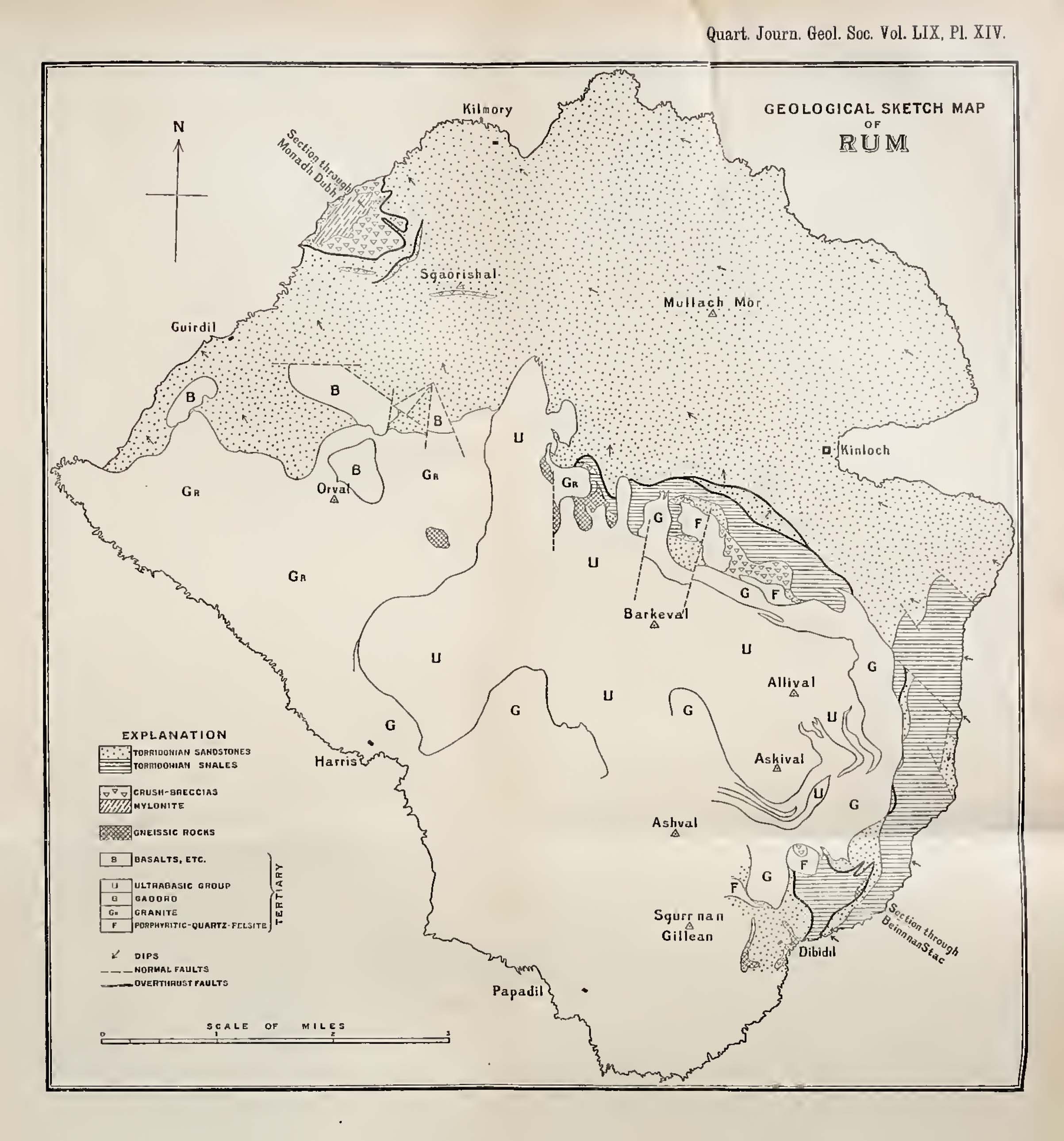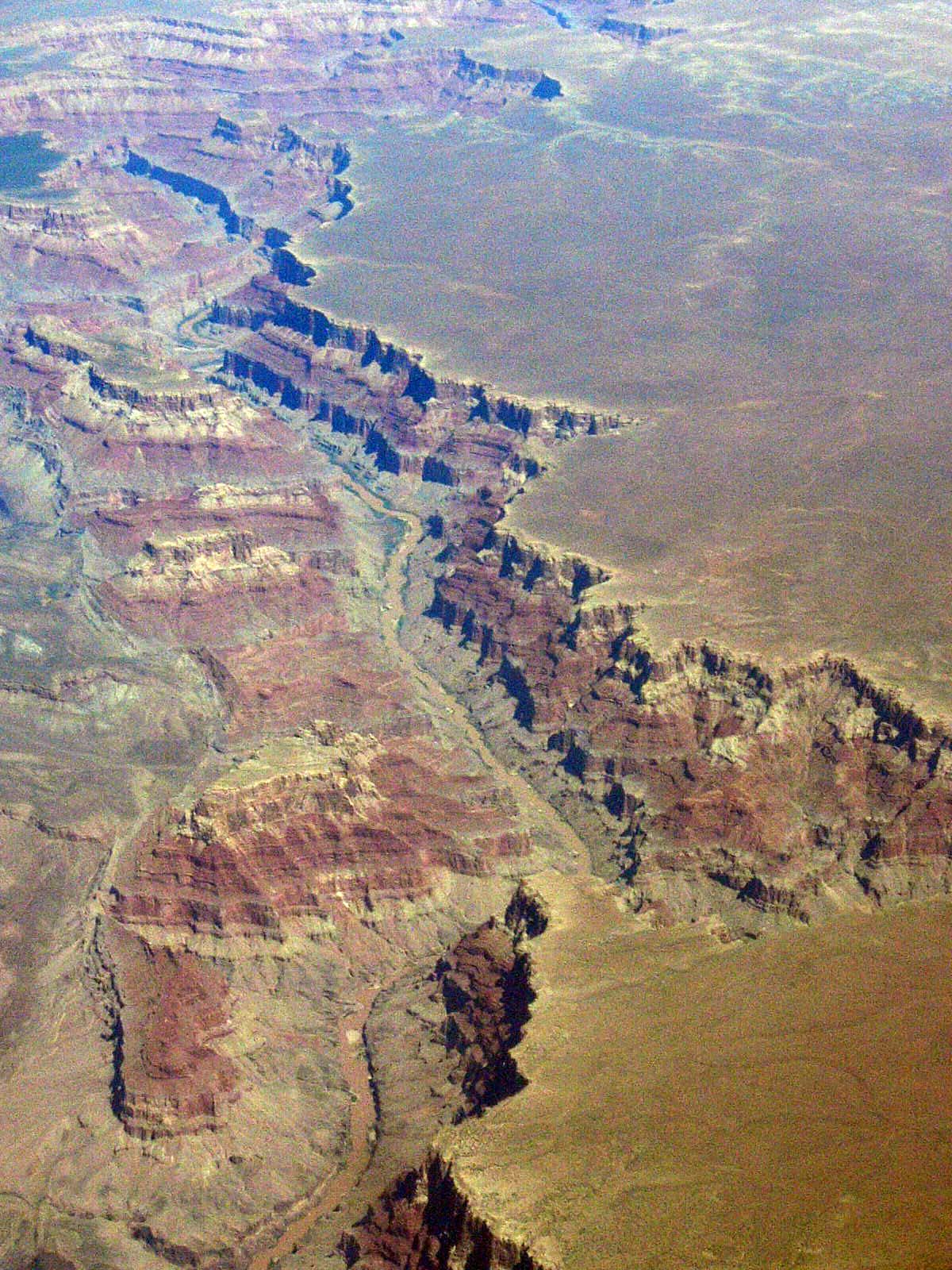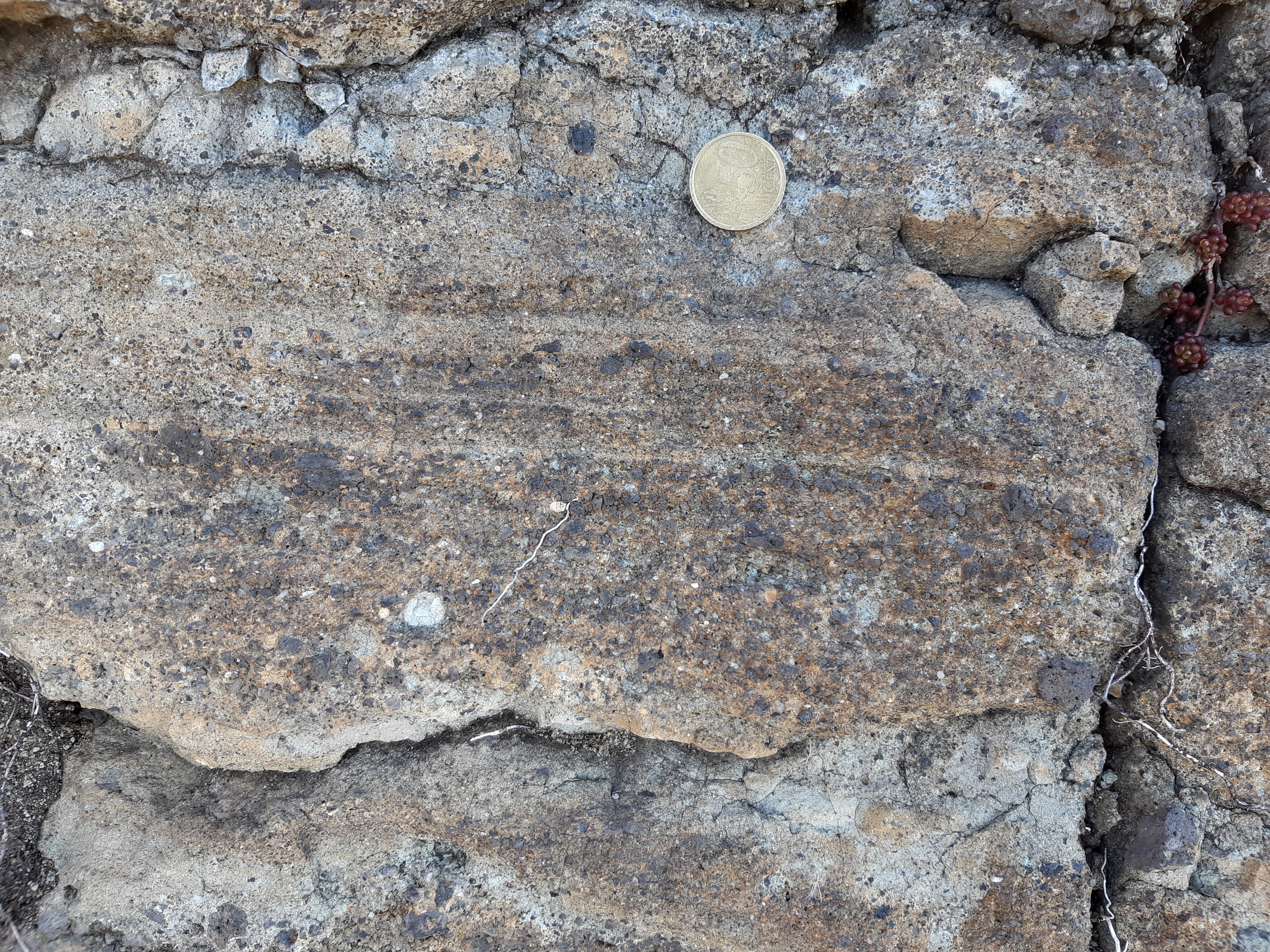|
Sgurr Of Eigg Pitchstone Formation
The Sgurr of Eigg Pitchstone Formation is a volcanic geological formation, formation of late Paleocene age exposed on Eigg, part of the Inner Hebrides in Scotland. It is thought to represent a remnant of a much larger deposit that originated from the Skye igneous centre to the northeast, formed by an eruption, possibly with a Volcanic Explosivity Index, VEI of 6 or greater. Extent Due to its resistance to erosion, the Sgurr of Eigg Pitchstone Formation forms a prominent 3 km long ridge in the southwestern part of Eigg, with the peak of An Sgùrr (Eigg), An Sgùrr at the eastern end and Bidean Boidheach at the western end. The pitchstone is preserved within a paleovalley eroded down into the underlying olivine basalts of the Eigg Lava Formation. It has been correlated with a similar pitchstone that outcrops on Hyskeir, Òigh-Sgeir, a group of rocky islets 30 km west-northwest of Eigg. Lithology The formation is described as a pitchstone. In the TAS classification scheme samples fr ... [...More Info...] [...Related Items...] OR: [Wikipedia] [Google] [Baidu] |
Paleocene
The Paleocene ( ), or Palaeocene, is a geological epoch (geology), epoch that lasted from about 66 to 56 mya (unit), million years ago (mya). It is the first epoch of the Paleogene Period (geology), Period in the modern Cenozoic Era (geology), Era. The name is a combination of the Ancient Greek ''palaiós'' meaning "old" and the Eocene Epoch (which succeeds the Paleocene), translating to "the old part of the Eocene". The epoch is bracketed by two major events in Earth's history. The K–Pg extinction event, brought on by an asteroid impact (Chicxulub impact) and possibly volcanism (Deccan Traps), marked the beginning of the Paleocene and killed off 75% of species, most famously the non-avian dinosaurs. The end of the epoch was marked by the Paleocene–Eocene Thermal Maximum (PETM), which was a major climatic event wherein about 2,500–4,500 gigatons of carbon were released into the atmosphere and ocean systems, causing a spike in global temperatures and ocean acidification. ... [...More Info...] [...Related Items...] OR: [Wikipedia] [Google] [Baidu] |
TAS Classification
TAS stands for Total Alkali Silica. The TAS classification can be used to assign names to many common types of volcanic rocks based upon the relationships between the combined alkali and silica contents. These chemical parameters are useful because the relative proportions of alkalis and silica are important in determining both normative mineralogy and actual mineralogy. The classification can be simple to use for rocks that have been chemically analyzed. Except for the following quotation from Johannsen (1937), this discussion is based upon Le Maitre et al (2002). Use of the TAS classification Before using the TAS or any other classification, some particular guidance by Johannsen (1937) should be kept in mind. :''Many and peculiar are the classifications that have been proposed for igneous rocks. Their variability depends in part upon the purpose for which each was intended, and in part upon the difficulties arising from the characters of the rocks themselves. The trouble is not w ... [...More Info...] [...Related Items...] OR: [Wikipedia] [Google] [Baidu] |
North Atlantic Igneous Province
The North Atlantic Igneous Province (NAIP) is a large igneous province in the North Atlantic, centered on Iceland. In the Paleogene, the province formed the Thulean Plateau, a large basaltic lava plain, which extended over at least in area and in volume. The plateau was broken up during the opening of the North Atlantic Ocean leaving remnants preserved in north Ireland, west Scotland, the Faroe Islands, northwest Iceland, east Greenland, western Norway and many of the islands located in the north eastern portion of the North Atlantic Ocean. The igneous province is the origin of the Giant's Causeway and Fingal's Cave. The province is also known as Brito–Arctic province (also known as the North Atlantic Tertiary Volcanic Province) and the portion of the province in the British Isles is also called the British Tertiary Volcanic Province or British Tertiary Igneous Province. Formation Radiometric dating, Isotopic dating indicates the most active magmatic phase of the NAIP was bet ... [...More Info...] [...Related Items...] OR: [Wikipedia] [Google] [Baidu] |
Dense-rock Equivalent
Dense-rock equivalent (DRE) is a volcanologic calculation used to estimate volcanic eruption volume. One of the widely accepted measures of the size of a historic or prehistoric eruption is the volume of magma ejected as pumice and volcanic ash, known as tephra during an explosive phase of the eruption, or the volume of lava extruded during an effusive phase of a volcanic eruption. Eruption volumes are commonly expressed in cubic kilometers (km3). Historical and geological estimates of tephra volumes are usually obtained by mapping the distribution and thickness of tephra deposits on the ground after the eruption is over. For historical volcanic explosions, further estimates must be made of tephra deposits that might have changed significantly over time by other geological processes including erosion. Tephra volumes measured in this way must then be corrected for void spaces ( vesicles – bubbles within the pumice, empty spaces between individual pieces of pumice or ash) to get ... [...More Info...] [...Related Items...] OR: [Wikipedia] [Google] [Baidu] |
Rùm
Rùm (), a Scottish Gaelic language, Scottish Gaelic name often Anglicisation, anglicised to Rum ( ), is one of the Small Isles of the Inner Hebrides, off the west coast of Scotland, in the district of Lochaber. For much of the 20th century the name became Rhum, a spelling invented by the former owner, George Bullough, 1st Baronet Bullough, Sir George Bullough, because he did not relish the idea of having the title "Laird of Rum". It is the largest of the Small Isles, and the 15th largest Scottish island, and is inhabited by 40 people, all of whom live in the hamlet of Kinloch, Rùm, Kinloch on the east coast. The island has been inhabited since the 8th millennium BC and provides some of the earliest known evidence of human occupation in Scotland. The early Celts, Celtic and Norsemen, Norse settlers left only a few written accounts and artefacts. From the 12th to 13th centuries on, the island was held by various clans including the Clan MacLean, MacLeans of Coll. The population ... [...More Info...] [...Related Items...] OR: [Wikipedia] [Google] [Baidu] |
Ignimbrite
Ignimbrite is a type of volcanic rock, consisting of hardened tuff. Ignimbrites form from the deposits of pyroclastic flows, which are a hot suspension of particles and gases flowing rapidly from a volcano, driven by being denser than the surrounding atmosphere. New Zealand geologist Patrick Marshall (1869–1950) coined the term ''ignimbrite'' from the Latin ''igni-'' [fire] and ''imbri-'' [rain]. Ignimbrites are made of a very poorly sorted mixture of volcanic ash (or tuff when Lithification, lithified) and pumice lapilli, commonly with scattered lithic fragments. The ash is composed of glass shards and crystal fragments. Ignimbrites may be loose and unconsolidated, or lithified (solidified) rock called lapilli tuff. Near the volcanic source, ignimbrites often contain thick accumulations of lithic blocks, and distally, many show meter-thick accumulations of rounded cobbles of pumice. Ignimbrites may be white, grey, pink, beige, brown, or black depending on their composition and ... [...More Info...] [...Related Items...] OR: [Wikipedia] [Google] [Baidu] |
Alfred Harker
Alfred Harker Fellow of the Royal Society, FRS (19 February 1859 – 28 July 1939) was an English geologist who specialised in petrology and interpretive petrography. He was lecturer in petrology at the University of Cambridge for many years, and carried out field mapping for the Geological Survey of Scotland and geological studies of western Scotland and the Isle of Skye. He and other British geologists pioneered the use of thin sections and the petrographic microscope in interpretive petrology. Education and career Harker's father was the Yorkshire corn merchant Portas Hewart Harker, his mother Ellen Mary Harker. He attended Hull College, Hull and East Riding College, and the private Clewer House School (Windsor, Berkshire, Windsor) before enrolling as an undergraduate at St John's College, Cambridge, St. John's College (Cambridge) from where he graduated with an Master's degree, M.A. on 18 January 1882. Whilst at Cambridge he was an early member of the Sedgwick Club. In 1884 ... [...More Info...] [...Related Items...] OR: [Wikipedia] [Google] [Baidu] |
Archibald Geikie
Sir Archibald Geikie (28 December 1835 – November 1924) was a Scottish geologist and writer. Early life Geikie was born in Edinburgh in 1835, the eldest son of Isabella Thom and her husband James Stuart Geikie, a musician and music critic. The elder brother of James Geikie, he was educated at Edinburgh High School and University of Edinburgh. Career In 1855 Geikie was appointed an assistant with the British Geological Survey. Among his early publications for a popular audience was ''The Story of a Boulder; or, Gleanings from the Note-Book of a Geologist'' (1858). His ability at once attracted the notice of his chief, Sir Roderick Murchison, with whom he formed a lifelong friendship, and whose biographer he subsequently became. Geikie completed some early geological mapping with Murchison on complicated regions of schists in the Scottish Highlands; and they jointly published a new geological map of Scotland in 1862. Geikie completed a larger map in 1892. In 1863 he publi ... [...More Info...] [...Related Items...] OR: [Wikipedia] [Google] [Baidu] |
Debris Flow
Debris flows are geological phenomena in which water-laden masses of soil and fragmented Rock (geology), rock flow down mountainsides, funnel into stream channels, entrain objects in their paths, and form thick, muddy deposits on valley floors. They generally have bulk density, bulk densities comparable to those of rock avalanche, rockslides and other types of landslide classification, landslides (roughly 2000 kilograms per cubic meter), but owing to widespread sediment liquefaction caused by high pore pressure, pore-fluid pressures, they can flow almost as fluidly as water. Debris flows descending steep channels commonly attain speeds that surpass 10 m/s (36 km/h), although some large flows can reach speeds that are much greater. Debris flows with volumes ranging up to about 100,000 cubic meters occur frequently in mountainous regions worldwide. The largest prehistoric flows have had volumes exceeding 1 billion cubic meters (i.e., 1 cubic kilometer). As a result o ... [...More Info...] [...Related Items...] OR: [Wikipedia] [Google] [Baidu] |
Conglomerate (geology)
Conglomerate () is a sedimentary rock made up of rounded gravel-sized pieces of rock surrounded by finer-grained sediments (such as sand, silt, or clay). The larger fragments within conglomerate are called clasts, while the finer sediment surrounding the clasts is called the matrix. The clasts and matrix are typically cemented by calcium carbonate, iron oxide, silica, or hardened clay. Conglomerates form when rounded gravels deposited by water or glaciers become solidified and cemented by pressure over time. They can be found in sedimentary rock sequences of all ages but probably make up less than 1 percent by weight of all sedimentary rocks. They are closely related to sandstones in origin, and exhibit many of the same types of sedimentary structures, such as tabular and trough cross-bedding and graded bedding.Boggs, S. (2006) ''Principles of Sedimentology and Stratigraphy.'', 2nd ed. Prentice Hall, New York. 662 pp. Friedman, G.M. (2003) ''Classification of sediments and s ... [...More Info...] [...Related Items...] OR: [Wikipedia] [Google] [Baidu] |
Peperite
A peperite is a type of volcaniclastic rock consisting of sedimentary rock that contains fragments of younger igneous material and is formed when magma comes into contact with wet sediments. The term was originally used to describe rocks from the Limagne region of France, from the similarity in appearance of the granules of dark basalt in the light-coloured limestone to black pepper. Typically the igneous fragments are glassy and show chilled-margins to the sedimentary matrix, distinguishing them from clasts with a sedimentary origin. Terminology The term has been used to describe a wide variety of rocks that are interpreted to have formed by the interaction between magma and sediments. This usage has led to overlap with other terms such as hyaloclastite. In the 2002 edition of ''"Igneous Rocks"'' by Le Maître et al., the definition is given as "A local term for a tuff or breccia, formed by the intrusion of magma into wet sediments. Usually consists of glassy fragments of igneou ... [...More Info...] [...Related Items...] OR: [Wikipedia] [Google] [Baidu] |
Breccia
Breccia ( , ; ) is a rock composed of large angular broken fragments of minerals or Rock (geology), rocks cementation (geology), cemented together by a fine-grained matrix (geology), matrix. The word has its origins in the Italian language, in which it means "rubble". A breccia may have a variety of different origins, as indicated by the named types including sedimentary breccia, fault (geology), fault or tectonics, tectonic breccia, igneous breccia, Impact event, impact breccia, and Hydrothermal circulation, hydrothermal breccia. A megabreccia is a breccia composed of very large rock fragments, sometimes kilometers across, which can be formed by landslides, impact events, or caldera collapse. Types Breccia is composed of coarse rock fragments held together by cement or a fine-grained matrix. Like Conglomerate (geology), conglomerate, breccia contains at least 30 percent of gravel-sized particles (particles over 2mm in size), but it is distinguished from Conglomerate (geol ... [...More Info...] [...Related Items...] OR: [Wikipedia] [Google] [Baidu] |









